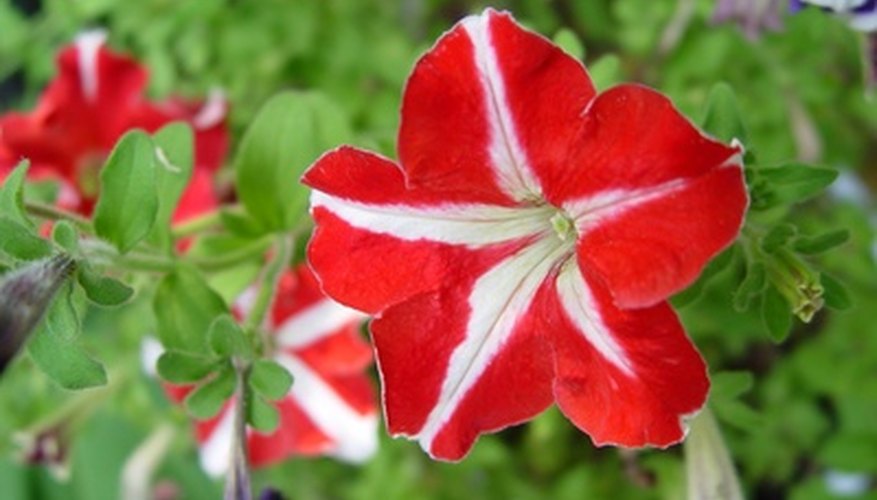Petunias are commonly seen in flower beds, window boxes and hanging basketsacross the UK through the spring and summer. They are a showy annual with blooms lasting from spring to fall, if they are pruned midseason. Petunias also are easy to care for, making them popular. However, wilting petunias can be an unfortunate occurrence in showy flower gardens.
Causes
Petunias are sensitive to water. If they are watered too little or too much, they will wilt. Too much water is the most common reason for wilting petunias. Petunias are susceptible to diseases such as alternaria blight, crown rot, fusarium wilt, botrytis, and fascination. Insects such as aphids, tomato worms, yellow woolybear, caterpillars, slugs, spider mites, snails and cutworms can also cause petunias to wilt. A lack of nitrogen or iron in the plant can also cause wilting. Typically, this is caused from overwatering or underfertilising.
- Petunias are sensitive to water.
- A lack of nitrogen or iron in the plant can also cause wilting.
Diagnosis
In addition to wilting, other symptoms may occur in petunias if they are diseased, over watered or under watered, or affected by pests. If the soil is soggy, it is being over watered. Diseases will typically stunt and deform the foliage of the plant. Flowers can also be deformed and discoloured. Leaves may have green streaks in them. Yellowish, puckered foliage will denote an aphid infestation. Tiny holes in the wilting leaves will be a sign of pest infestation.
- In addition to wilting, other symptoms may occur in petunias if they are diseased, over watered or under watered, or affected by pests.
- Tiny holes in the wilting leaves will be a sign of pest infestation.
Treatments
If diseased plants are discovered, removal and destruction of that plant is the only treatment. Insects and pests can be picked off of the plants, sealed in plastic bags, and thrown in the bin. Using insecticidal soaps can also eliminate insect infestation, but be sure to reapply the soap every two to four weeks, as directed on the soap. The insect-damaged parts of plants can be pinched off.
- If diseased plants are discovered, removal and destruction of that plant is the only treatment.
- Insects and pests can be picked off of the plants, sealed in plastic bags, and thrown in the bin.
Prevention
Soak petunias once per week with enough water to penetrate the soil down 15 or 20 cm (6 or 8 inches). Let the soil dry completely so that when you stick your finger in the dirt, it is dry to your second knuckle; then you can water again. Dig 5 to 7.5 cm (2 to 3 inches) of mulch or compost into the soil for 20 to 25 cm (8 to 10 inches) to improve drainage and aeration. Apply fertiliser every three weeks to keep plants strong and healthy. Do not plant the same plants in the same locations, the same soil, every year; this increases the likelihood of pests and diseases. Do not use tobacco products around petunias. Always maintain good sanitation throughout your garden and especially in petunia plants and beds.
- Soak petunias once per week with enough water to penetrate the soil down 15 or 20 cm (6 or 8 inches).
Culture/environment
Petunia seeds can be planted within four to six weeks before they are planted outside. If petunias are planted outside too soon, the roots do not have the chance to develop properly, and the plant has stunted growth, causing wilting. Petunias are a drought-resistant crop and prefer well-drained soil. Plants should be cut back during the middle of the season to promote growth and blooms. Although petunias like bright light, they should be kept out of direct sunlight. The soil temperature should be between 21.1 and 26.6 degrees C (70 and 80 degrees F) for strong plants.
- Petunia seeds can be planted within four to six weeks before they are planted outside.
